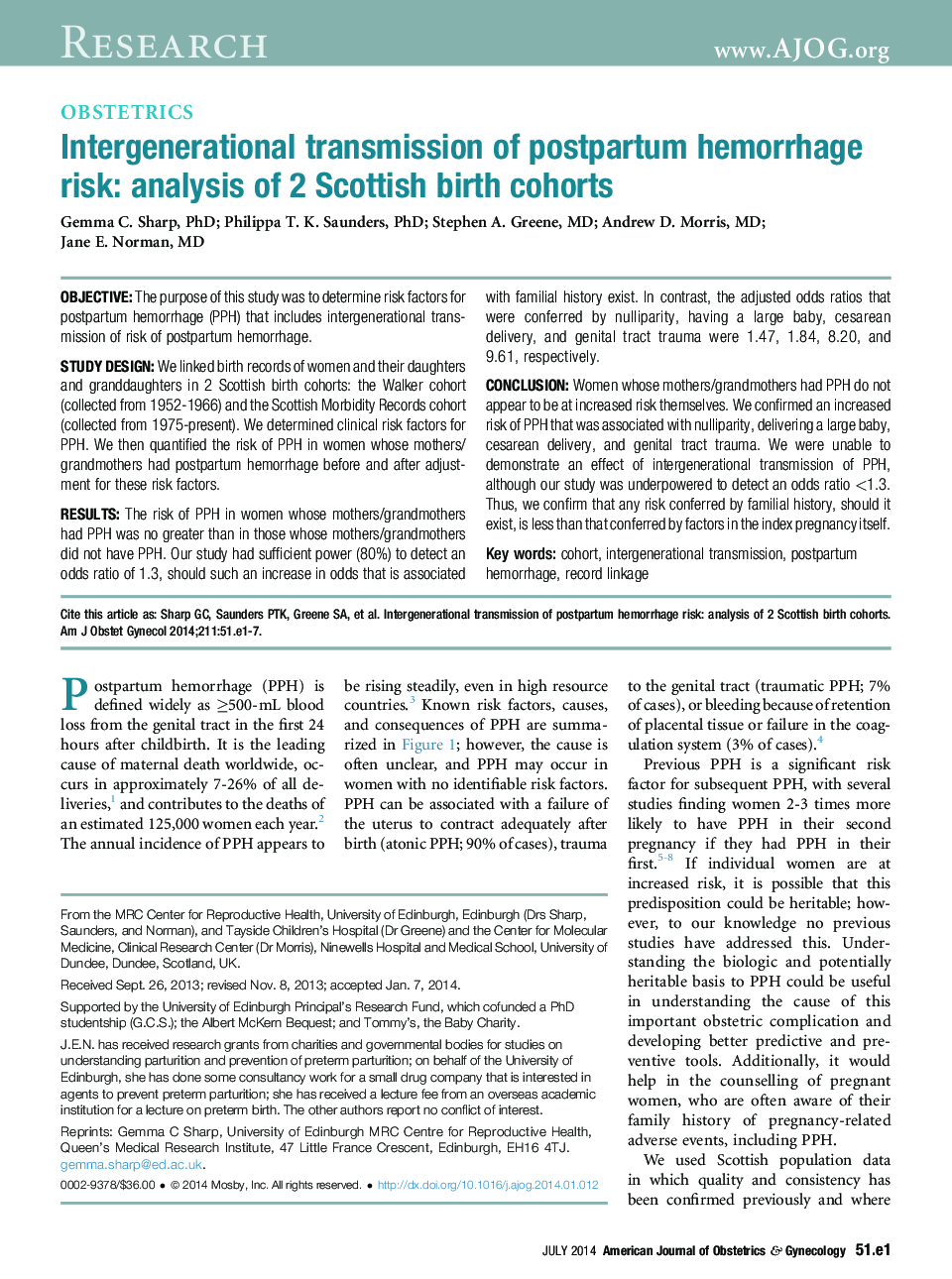| Article ID | Journal | Published Year | Pages | File Type |
|---|---|---|---|---|
| 6144922 | American Journal of Obstetrics and Gynecology | 2014 | 7 Pages |
ObjectiveThe purpose of this study was to determine risk factors for postpartum hemorrhage (PPH) that includes intergenerational transmission of risk of postpartum hemorrhage.Study DesignWe linked birth records of women and their daughters and granddaughters in 2 Scottish birth cohorts: the Walker cohort (collected from 1952-1966) and the Scottish Morbidity Records cohort (collected from 1975-present). We determined clinical risk factors for PPH. We then quantified the risk of PPH in women whose mothers/grandmothers had postpartum hemorrhage before and after adjustment for these risk factors.ResultsThe risk of PPH in women whose mothers/grandmothers had PPH was no greater than in those whose mothers/grandmothers did not have PPH. Our study had sufficient power (80%) to detect an odds ratio of 1.3, should such an increase in odds that is associated with familial history exist. In contrast, the adjusted odds ratios that were conferred by nulliparity, having a large baby, cesarean delivery, and genital tract trauma were 1.47, 1.84, 8.20, and 9.61, respectively.ConclusionWomen whose mothers/grandmothers had PPH do not appear to be at increased risk themselves. We confirmed an increased risk of PPH that was associated with nulliparity, delivering a large baby, cesarean delivery, and genital tract trauma. We were unable to demonstrate an effect of intergenerational transmission of PPH, although our study was underpowered to detect an odds ratio <1.3. Thus, we confirm that any risk conferred by familial history, should it exist, is less than that conferred by factors in the index pregnancy itself.
